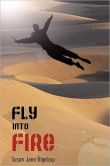Clicking – Susan Jane Bigelow
Today, please welcome Susan Jane Bigelow, talking about the portrayal of gender and the click of recognition upon finding characters like you. As well as the pain of those characters being played as a source of laughter and disgust.
Tomorrow’s guest post will be by Charlotte Ashley, talking about “The Princess Problem.”
I remember the first time it happened: I was watching “Saturday Night Live” at some point during the early 1990s, long before I’d ever even thought about words like “transgender,” when a sketch came on called “Lyle: The Effeminate Heterosexual.” Dana Carvey played a straight guy whose effeminate mannerisms made everyone assume he was gay. In retrospect it’s incredibly offensive, and even at the time it wasn’t very funny. But at the time I thought to myself, ah! This is what I am!
Because I wasn’t gay. I was just … girlish? Effeminate? I didn’t have any interest in other boys, but I was decidedly un-masculine and sometimes I cross-dressed, so what was I? It was the early 90s in white, suburban America; there were just no other words. Something about Lyle clicked in my teenage mind, and that sketch stayed with me for a long, long time. I’m Lyle, I would think. The effeminate heterosexual!
It didn’t really fit, but at least it was a start. It took me forever to sort out what I was, and where I really wanted to be. My sense of my own gender evolved and changed over time; I wasn’t the sort of person who knew from the age of five and stuck with it. I’m wonderfully clueless in some ways. But I’d still feel that same click of recognition whenever I came across characters in fiction that I knew, somehow, were sort of like me.
For instance, Belize, a drag queen in Angels in America, gave me that sense. Angel in the musical “RENT,” which I was lucky enough to see on Broadway when it was still in previews, was another — here was a man who was very effeminate, and sometimes used female pronouns. Later, I discovered Bel Thorne in Lois McMaster Bujold’s Vorkosigan Saga, a hermaphrodite whose presentation wandered freely across gender lines. I felt that little shock of identification with the gender variance embodied by each of them.
There were a lot of negative portrayals, too. There’s a very obscene reveal of a transgender woman in both Ace Ventura: Pet Detective and The Naked Gun 33 1/3, both of which I saw in the theater. The main characters reacted with disgust; Leslie Nielson’s character runs and throws up in a tuba. The audiences laughed.
I laughed, too, but inside I cringed and pushed that gender variant piece of myself down a little further. I was lucky; I wasn’t really aware of where I was headed yet, or why I felt the way I did. If I’d been more aware, those movies would have crushed me.
After I finally figured it all out and transitioned I started actively looking around for more media, especially in my favorite genres of science fiction and fantasy, where people like me were portrayed positively. There wasn’t much, and there still isn’t — though that’s changing now.

I hesitated about doing that. I wondered if I was going to be pegged as “that transgender author,” and if I’d find it hard to break out of that mold. I worried about backlash. I also wondered that when I wrote the story “Ramona’s Demons,” an urban fantasy short for the Lambda Award-winning The Collection from Topside Press. But then I thought about how little there was out there, especially in genre fiction, and how important those few positive characters who were enough like me to click had been, and decided it was worth it.
Not every book or story I write has transgender people in it, though I almost always have queer people of one sort or another, and almost all of my protagonists identify as women. I also don’t sell a ton of books. That’s life in the long tail! But every once in a while I get a fan letter from someone saying Thank you for Renna or Thank you for Ramona, and that makes it all worth it.
A big thank you to Jim for hosting this piece, and to all his wonderful readers.
 Susan Jane Bigelow is a librarian, SF/F author and political columnist, among other things. She started writing science fiction when she was little, but her first published novel was 2011′s BROKEN (Extrahumans #1). Since then, two more Extrahumans novels, FLY INTO FIRE and THE SPARK, have been published. The first book in a new series, THE DAUGHTER STAR, came out in May, 2013. She writes a weekly political column for the Connecticut political news website, CT News Junkie, where she focuses on politics inside and relevant to the Nutmeg State. She also likes biking, reading, walking, Doctor Who, My Little Pony and all kinds of other things.
Susan Jane Bigelow is a librarian, SF/F author and political columnist, among other things. She started writing science fiction when she was little, but her first published novel was 2011′s BROKEN (Extrahumans #1). Since then, two more Extrahumans novels, FLY INTO FIRE and THE SPARK, have been published. The first book in a new series, THE DAUGHTER STAR, came out in May, 2013. She writes a weekly political column for the Connecticut political news website, CT News Junkie, where she focuses on politics inside and relevant to the Nutmeg State. She also likes biking, reading, walking, Doctor Who, My Little Pony and all kinds of other things.





